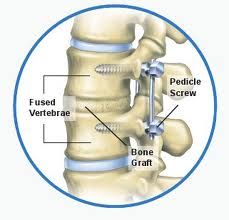On October 11, 2008 Gilbert Hernandez was working at a construction site in the Bronx inspecting a gas line being installed in a six-foot deep trench. As he was climbing out, Mr. Hernandez fell down into the trench landing on his back.
In his ensuing lawsuit against Danella Construction of New York, Inc. – the pipe installation subcontractor – the jury determined that the defendant was liable under Labor Law Section 240 because it failed to provide the proper equipment (i.e., a ladder) so that plaintiff, then 44 years old, could have safely exited the elevation-related hazard.
Hernandez was awarded substantial damages from the Bronx jury on June 2, 2014 but the amount was slashed in a post-trial decision on September 22, 2015 and in Hernandez v. Consolidated Edison Co. of N.Y., Inc. (1st Dept. 2016) the trial judge’s reductions have been affirmed.
The appellate court decision, though, provides no information at all as to the plaintiff’s injuries and fails to disclose any of the the amounts awarded by the jury, reduced by the trial judge and affirmed by the appellate court.
Here are the injury details:
- herniated discs at L3-4, L4-5 and L5-S1
- three epidural and facet block injections, extensive physical therapy
- laminectomy and fusion at L4-5 and L5-S1 with bone graft, six screws, plate and two rods requiring one week hospitalization
- failed back surgery syndrome and chronic pain requiring three spine stimulator implant surgeries
- left ankle sprain and wound with infection requiring one week hospitalization for antibiotic therapy; chronic pain and limited range of motion
- unable to return to construction work, take long walks or ride a bicycle
The jury awarded plaintiff pain and suffering damages in the sum of $2,500,000 ($300,000 past – 5 1/2 years, $2,200,000 future – 31 years); however, the trial judge reduced the jury’s pain and suffering award to $1,400,000 ($200,000 past, $1,200,000 future) and that’s the amount affirmed by the appellate court.
Inside Information:
- Based largely upon a life care plan prepared by one of plaintiff’s experts that delineated likely future medical needs and costs (such as about $1,500,000 for additional spinal cord stimulation procedures and replacements), the jury also awarded past medical expenses in the sum of $300,000 and future medical expenses in the sum of $2,700,000. The trial judge found (and the appellate court agreed) that most of the future medical expenses award was speculative and it was reduced to $491,431.
- Plaintiff’s pre-trial settlement demand was $750,000 against an offer of $50,000.
- Plaintiff was helped out of the trench, in pain, but declined medical attention at the scene, returned to work two days later and worked for another six days before he first sought any medical treatment related to his injuries. Thereafter, he never returned to work.
- Consolidated Edison Company was the first named defendant in the lawsuit caption but the claims against it were dismissed during trial and the case was continued and tried against only Danella Construction.


